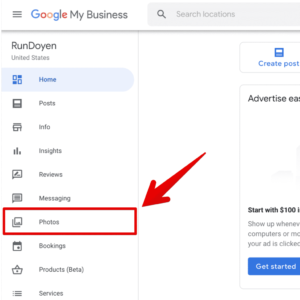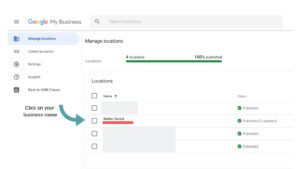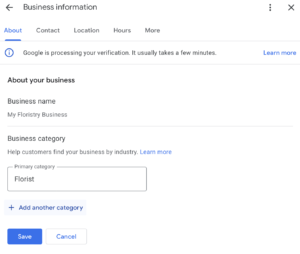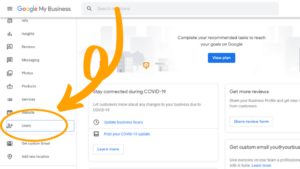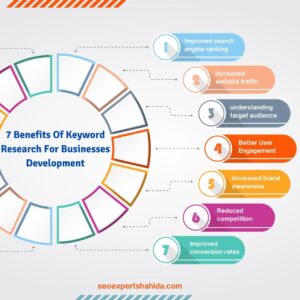To do competitor analysis in digital marketing, identify key competitors and analyze their online strategies. Focus on their website, SEO, content, and social media presence.
Competitor analysis in digital marketing is essential for understanding market dynamics and developing effective strategies. By studying competitors, you can uncover their strengths and weaknesses, allowing you to identify opportunities for your own business. Start by listing your main competitors and examining their online activities.
Look at their website design, keyword usage, and backlink profile. Evaluate their content marketing efforts, including blogs, videos, and social media posts. Assess their engagement levels and audience interaction. This comprehensive analysis helps you stay ahead and refine your own digital marketing efforts to achieve better results.
Why Competitor Analysis Is Important
Competitor analysis is a crucial part of digital marketing. It helps businesses understand their market position, identify gaps, and develop strategies to outperform their rivals. Knowing why competitor analysis is important can empower your digital marketing efforts, ensuring you stay ahead in the game.
Stay Ahead Of The Competition
To stay ahead of the competition, you need to know what your competitors are doing. Competitor analysis helps you understand their strategies and tactics. This knowledge allows you to adjust your own strategies accordingly.
Consider these points:
- Monitor competitor’s marketing campaigns. See what works for them and what doesn’t.
- Analyze their social media presence. Observe their engagement levels and content strategies.
- Study their SEO tactics. Identify the keywords they target and their backlink sources.
By continuously monitoring these aspects, you can anticipate market trends and adapt quickly. This keeps you ahead and makes your business more agile.
Identify Strengths And Weaknesses
Understanding your competitor’s strengths and weaknesses is vital. This insight helps you improve your own strategies and exploit their weaknesses.
Here’s how to do it:
- SWOT Analysis: Conduct a SWOT (Strengths, Weaknesses, Opportunities, Threats) analysis of your competitors.
- Compare Product Features: Make a table comparing your products with those of your competitors.
- Customer Feedback: Read customer reviews of your competitors to understand their strengths and weaknesses.
For example, if a competitor’s strength is in customer service, you can work on improving your own. If a competitor has a weakness in product quality, you can highlight your superior quality in your marketing.
Discover New Opportunities
Competitor analysis also helps you discover new opportunities. By understanding your competitors, you can find areas where you can excel.
Look for opportunities in these areas:
- Market Gaps: Identify gaps in the market that your competitors are not addressing.
- Untapped Keywords: Use keyword research tools to find keywords your competitors are not targeting.
- Emerging Trends: Stay updated on industry trends and be the first to capitalize on them.
For instance, if your competitors are not active on a particular social media platform, you can establish a strong presence there. Or, if they are not targeting a specific demographic, you can tailor your campaigns to that group.
By discovering these opportunities, you can carve out a niche for your business and attract more customers.
Steps To Conduct Competitor Analysis
In the dynamic world of digital marketing, understanding your competitors is crucial. Conducting a competitor analysis helps you identify market trends, opportunities, and potential threats. By following a systematic approach, you can gain valuable insights and stay ahead of the competition. Below are the essential steps to conduct a thorough competitor analysis.
Identify Your Competitors
Identifying your competitors is the first step. Start with direct competitors—those who offer similar products or services. Also, consider indirect competitors who target the same audience but with different offerings.
To identify competitors, you can:
- Google Search: Use keywords related to your business and see who ranks high.
- Social Media: Check who appears when you search industry-related hashtags or keywords.
- Customer Feedback: Ask your customers who else they considered before choosing you.
Once identified, list your competitors in a table for easy reference:
| Competitor Name | Product/Service | Website |
|---|---|---|
| Competitor A | Product A | competitora.com |
| Competitor B | Service B | competitorb.com |
Analyze Competitor’s Website
Analyzing a competitor’s website gives insights into their design, user experience, and functionality. Examine the following:
- Homepage: How is it structured? Is it user-friendly?
- Navigation: Is it easy to find information?
- Mobile Responsiveness: Does it work well on mobile devices?
- Loading Speed: How fast does the website load?
Use tools like Google PageSpeed Insights or GTmetrix to evaluate their website performance. Take notes on elements that work well and those that don’t.
Evaluate Competitor’s Seo Strategy
Evaluating your competitor’s SEO strategy involves examining their keywords, backlinks, and on-page SEO. Start with these steps:
- Keyword Analysis: Use tools like SEMrush or Ahrefs to identify the keywords they rank for.
- Backlink Profile: Analyze their backlinks to see where they’re getting their link juice.
- On-Page SEO: Check their title tags, meta descriptions, and header tags.
Compare their SEO strategy with yours and identify areas for improvement.
Examine Competitor’s Content Marketing
Content marketing is a powerful tool. Examine what type of content your competitors produce and how often they publish.
- Blog Posts: What topics do they cover? How frequently do they post?
- Videos: Do they have a YouTube channel? What type of videos do they create?
- Infographics: Are they using visual content to convey information?
Look for gaps in their content strategy that you can fill.
Assess Competitor’s Social Media Presence
Assessing your competitor’s social media presence can reveal a lot about their engagement strategies. Check the following:
- Platforms: Which social media platforms are they active on?
- Engagement: How often do they post? What is their engagement rate?
- Content Type: What type of content do they share? (e.g., images, videos, articles)
Tools like Hootsuite or Sprout Social can help you analyze their social media performance.
Review Competitor’s Paid Advertising
Reviewing your competitor’s paid advertising gives insights into their marketing budget and strategy. Look at:
- Ad Platforms: Are they using Google Ads, Facebook Ads, or another platform?
- Ad Copy: What messaging are they using?
- Targeting: Who are they targeting with their ads?
Use tools like SpyFu or AdBeat to gather detailed information about their paid advertising efforts.
Analyze Competitor’s Email Marketing
Email marketing is a vital part of digital marketing. Analyze your competitor’s email campaigns by:
- Signing Up: Subscribe to their newsletter to see their email frequency and content.
- Content: What type of emails do they send? (e.g., promotional, informational)
- Design: How visually appealing are their emails?
Compare their email marketing strategy with yours and identify areas for improvement.
Monitor Competitor’s Online Reputation
Monitoring your competitor’s online reputation helps you understand their strengths and weaknesses. Check the following:
- Reviews: What are customers saying on platforms like Yelp, Google Reviews, and Trustpilot?
- Social Mentions: Are they mentioned frequently on social media?
- Forum Discussions: Are they discussed in online forums related to your industry?
Use tools like Google Alerts or Mention to stay updated on their online reputation.
Tools For Competitor Analysis
Competitor analysis is a vital part of digital marketing. Understanding what your competitors are doing helps you to refine your strategies and stay ahead. To conduct a thorough competitor analysis, you need the right tools. These tools help you gather valuable insights into various aspects of your competitors’ digital presence.
Keyword Research Tools
Keyword research tools are essential for understanding which keywords your competitors are targeting. By identifying these keywords, you can optimize your content strategy and improve your search engine rankings. Here are some popular keyword research tools:
- Google Keyword Planner: This free tool helps you find the right keywords for your business. It provides data on search volume, competition, and cost-per-click.
- SEMrush: SEMrush offers detailed keyword analysis, including keyword difficulty, search volume, and competitive density. It also provides a list of keywords your competitors are ranking for.
- Ahrefs: Ahrefs is another powerful tool that offers extensive keyword research capabilities. It provides keyword difficulty scores, search volume, and related keywords.
- Ubersuggest: Ubersuggest is a user-friendly tool that provides keyword suggestions, search volume, and competition data.
Using these tools, you can identify high-performing keywords, monitor trends, and adjust your strategy accordingly.
Website Analytics Tools
Website analytics tools help you understand your competitors’ website performance. These tools provide insights into traffic, user behavior, and site performance. Some popular website analytics tools include:
- Google Analytics: Google Analytics is a free tool that provides detailed insights into website traffic, user behavior, and conversions.
- SimilarWeb: SimilarWeb offers competitive analysis by providing data on website traffic, user engagement, and top-performing pages.
- Alexa: Alexa provides website traffic data, audience insights, and competitive analysis.
- Quantcast: Quantcast offers audience measurement and real-time insights into website traffic and user behavior.
These tools help you understand your competitors’ strengths and weaknesses, allowing you to optimize your own website performance.
Social Media Monitoring Tools
Social media monitoring tools track your competitors’ social media activities. These tools provide insights into engagement, content performance, and audience demographics. Some popular social media monitoring tools are:
- Hootsuite: Hootsuite allows you to monitor multiple social media accounts, track engagement, and analyze performance.
- Sprout Social: Sprout Social offers social media monitoring, analytics, and reporting features.
- BuzzSumo: BuzzSumo helps you find the most shared content on social media, track influencers, and analyze competitor content.
- Brandwatch: Brandwatch provides social media analytics, sentiment analysis, and competitive benchmarking.
These tools help you stay updated on your competitors’ social media strategies, allowing you to refine your approach.
SEO Analysis Tools
SEO analysis tools help you understand your competitors’ search engine optimization strategies. These tools provide insights into backlinks, on-page optimization, and overall SEO performance. Some popular SEO analysis tools include:
- Ahrefs: Ahrefs offers comprehensive SEO analysis, including backlink analysis, keyword research, and site audits.
- SEMrush: SEMrush provides detailed SEO analysis, including on-page SEO, backlink analysis, and site audits.
- Moz: Moz offers SEO tools for keyword research, link building, and site audits.
- Screaming Frog: Screaming Frog is a website crawler that helps you analyze on-page SEO elements.
These tools help you identify SEO opportunities, monitor your competitors’ strategies, and improve your own search engine rankings.
Competitor Research Tools
Competitor research tools provide a comprehensive view of your competitors’ digital marketing strategies. These tools offer insights into various aspects, including SEO, PPC, content, and social media. Some popular competitor research tools are:
- SEMrush: SEMrush provides a wide range of competitive analysis features, including traffic analysis, keyword research, and backlink analysis.
- Ahrefs: Ahrefs offers competitor analysis features, including backlink analysis, keyword research, and content analysis.
- SpyFu: SpyFu allows you to see your competitors’ keywords, ad campaigns, and top-performing content.
- iSpionage: iSpionage provides competitive intelligence for PPC campaigns, SEO, and landing pages.
Using these tools, you can gain a deeper understanding of your competitors’ strategies and identify opportunities to improve your own digital marketing efforts.
Key Metrics To Consider
Competitor analysis is crucial in digital marketing. It helps you understand your market, spot opportunities, and make informed decisions. To get the most out of your competitor analysis, focus on key metrics that provide insights into your competitors’ strengths and weaknesses.
Website Traffic
Website traffic is a vital metric. It shows how many visitors are landing on your competitor’s site. This data can help you understand their reach and popularity. Here are some tools to analyze website traffic:
- Google Analytics: Provides detailed traffic reports.
- SEMrush: Offers traffic estimates and sources.
- Alexa: Ranks websites and shows traffic data.
Track metrics like:
- Total visits: Overall number of visitors.
- Traffic sources: Where the traffic is coming from (organic, direct, referral, social).
- Top pages: Most visited pages on the competitor’s site.
Use this data to identify which strategies are working for your competitors. Adjust your strategies accordingly to improve your site’s traffic.
Keyword Rankings
Keyword rankings tell you which keywords your competitors are ranking for. This helps you understand which terms are driving traffic to their site. Use tools like:
- Ahrefs: Provides keyword ranking data and search volume.
- SEMrush: Shows your competitors’ top keywords and positions.
- Google Keyword Planner: Offers keyword ideas and competition level.
Monitor metrics such as:
- Top keywords: Keywords bringing the most traffic.
- Search volume: Number of searches for each keyword.
- Keyword difficulty: How hard it is to rank for a keyword.
Identify gaps in your keyword strategy and find new opportunities to rank higher in search results.
Backlink Profile
Backlinks are crucial for SEO. They help improve your site’s authority and rankings. Analyzing your competitors’ backlink profiles can reveal opportunities for your own link-building efforts. Use tools like:
- Ahrefs: Provides detailed backlink data and metrics.
- Moz Link Explorer: Offers insights into your competitors’ backlinks.
- Majestic: Shows the quality and quantity of backlinks.
Focus on metrics such as:
- Total backlinks: Number of links pointing to their site.
- Referring domains: Number of unique domains linking to their site.
- Link quality: Authority and relevance of the linking sites.
Use this data to identify potential link-building opportunities and improve your site’s authority.
Social Media Engagement
Social media engagement indicates how well your competitors are connecting with their audience. High engagement means strong relationships and brand loyalty. Analyze their social media presence using tools like:
- Hootsuite: Tracks social media metrics and engagement.
- Sprout Social: Provides detailed engagement reports.
- BuzzSumo: Shows top-performing content and social shares.
Key metrics to track include:
- Followers: Number of followers on each platform.
- Likes, shares, comments: Level of interaction with their content.
- Top posts: Most engaging content.
Understand what type of content resonates with their audience and tailor your social media strategy to boost engagement.
Conversion Rates
Conversion rates show how well your competitors are turning visitors into customers. High conversion rates mean effective marketing and sales strategies. Use tools like:
- Google Analytics: Tracks goals and conversion rates.
- Hotjar: Provides insights into user behavior and conversions.
- Crazy Egg: Offers heatmaps and conversion data.
Track metrics such as:
- Goal completions: Number of conversions achieved.
- Conversion rate: Percentage of visitors who convert.
- Average order value: Average amount spent per transaction.
Analyze this data to improve your sales funnel and increase your own conversion rates.
Online Reviews And Ratings
Online reviews and ratings affect your competitors’ reputation and customer trust. Positive reviews build credibility, while negative reviews can harm their image. Monitor their reviews using platforms like:
- Google My Business: Provides customer reviews and ratings.
- Yelp: Shows customer feedback and ratings.
- Trustpilot: Offers detailed reviews and ratings.
Focus on metrics such as:
- Average rating: Overall rating score.
- Number of reviews: Total number of customer reviews.
- Review sentiment: Positive, neutral, or negative feedback.
Identify areas where your competitors excel and where they fall short. Use this information to improve your own customer experience and reputation.
Analyzing Competitor’s Target Audience
Understanding your competitors’ target audience is crucial in digital marketing. By analyzing who they are targeting, you can identify gaps and opportunities to reach new customers. It also helps tailor your marketing strategies to attract similar or different audiences. This section will delve into the essential aspects of analyzing a competitor’s target audience: demographics, psychographics, online behavior, and customer feedback.
Demographics
Demographics provide concrete data about a competitor’s audience. This includes age, gender, income, education level, and location. Knowing these details helps you understand who your competitors are reaching and how you can reach them too.
Consider these points when evaluating demographics:
- Age: Identify the age groups your competitors are targeting. Are they focusing on millennials, Gen Z, or baby boomers?
- Gender: Determine the gender distribution. Are their campaigns more male or female-oriented?
- Income Level: Understand the income bracket of their audience. Are they targeting high-income earners or budget-conscious consumers?
- Education Level: Assess the education level. Are they appealing to highly educated individuals or those with high school diplomas?
- Location: Identify where their audience lives. Are they targeting urban areas, rural areas, or specific regions?
Example Table of Demographics:
| Demographic | Target Audience |
|---|---|
| Age | 25-34 |
| Gender | Male |
| Income Level | $50,000 – $75,000 |
| Education Level | Bachelor’s Degree |
| Location | Urban Areas |
Psychographics
Psychographics delve into the personality, values, opinions, and lifestyle of your competitor’s audience. This information provides insight into why they make purchasing decisions.
Key aspects to consider include:
- Interests: What hobbies or activities do they enjoy?
- Values: What are their core beliefs and values?
- Lifestyle: What kind of lifestyle do they lead? Are they fitness enthusiasts, tech-savvy, or eco-friendly?
- Personality Traits: Are they risk-takers, conservative, or trendsetters?
Example of Psychographic Profile:
- Interests: Fitness, Travel, Technology
- Values: Sustainability, Innovation, Community
- Lifestyle: Active, Urban, Health-conscious
- Personality Traits: Ambitious, Early Adopters, Outgoing
Online Behavior
Online behavior tracks how the audience interacts on the internet. This includes their browsing habits, social media usage, and content consumption patterns.
Important factors to evaluate:
- Browsing Habits: What websites do they visit?
- Social Media Usage: Which platforms do they use the most? Are they active on Facebook, Instagram, Twitter, or LinkedIn?
- Content Consumption: What type of content do they prefer? Blogs, videos, infographics, or podcasts?
- Engagement Levels: How often do they interact with content? Do they comment, share, or like posts regularly?
Example of Online Behavior:
- Browsing Habits: Tech blogs, E-commerce sites
- Social Media Usage: Instagram, LinkedIn
- Content Consumption: Video tutorials, How-to articles
- Engagement Levels: High engagement on tech reviews, Moderate on lifestyle tips
Customer Feedback
Customer feedback is invaluable for understanding how the audience perceives your competitors. Reviews, testimonials, and social media comments provide direct insights into customer satisfaction and areas for improvement.
Key points to focus on:
- Reviews: What are customers saying in their reviews? Are they positive, negative, or mixed?
- Testimonials: What do loyal customers highlight in their testimonials? Are there recurring themes?
- Social Media Comments: How do customers interact with your competitors on social media? Are there common praises or complaints?
- Surveys and Feedback Forms: What feedback do customers provide through surveys? What suggestions or criticisms are most common?
Example of Customer Feedback:
- Reviews: Mostly positive, highlighting excellent customer service
- Testimonials: Frequent mentions of high product quality
- Social Media Comments: Praise for fast shipping, occasional complaints about pricing
- Surveys and Feedback Forms: Suggestions for more product variety, requests for discounts

Credit: talentport.com
Identifying Competitor’s Marketing Strategies
Competitor analysis in digital marketing reveals what your competitors are doing right and where they are lacking. Identifying competitor’s marketing strategies is crucial for building your own effective tactics. This involves examining their content marketing, social media marketing, email marketing, search engine optimization, and paid advertising. Here’s how you can break down each area to gather actionable insights.
Content Marketing
Analyzing your competitor’s content marketing strategy helps you understand what type of content resonates with your target audience. Start by examining the following elements:
- Types of Content: Blog posts, videos, infographics, eBooks, and whitepapers.
- Frequency of Publishing: How often do they publish new content?
- Content Topics: What subjects do they cover, and how detailed are they?
- Engagement Metrics: Number of comments, shares, and likes.
- Content Formats: Listicles, how-to guides, case studies, etc.
Create a table to track this data:
| Content-Type | Frequency | Topics | Engagement |
|---|---|---|---|
| Blog Posts | Weekly | Marketing Tips | High |
| Videos | Monthly | Product Demos | Medium |
Use this information to identify gaps and opportunities for your content strategy.
Social Media Marketing
Understanding how your competitors use social media is essential. Examine the following aspects:
- Platforms: Which social media channels are they using? Facebook, Instagram, Twitter, LinkedIn?
- Post Frequency: How often do they post on each platform?
- Content Types: Are they sharing images, videos, stories, or live sessions?
- Engagement Levels: Track likes, shares, comments, and follower growth.
- Hashtags and Keywords: What hashtags and keywords do they frequently use?
Use a table to organize this data:
| Platform | Frequency | Content-Type | Engagement |
|---|---|---|---|
| Daily | Images, Videos | High | |
| Twice a Day | Stories, Images | Medium |
Identify the strategies that work and incorporate them into your social media plan.
Email Marketing
Email marketing is a potent tool for engaging customers. Analyze your competitor’s email marketing strategies by focusing on:
- Email Frequency: How often do they send emails?
- Email Types: Newsletters, promotional emails, transactional emails?
- Subject Lines: Are they attention-grabbing and effective?
- Content Quality: Are the emails informative, engaging, and relevant?
- Call to Action (CTAs): What CTAs do they use and how often?
Track this data in a table for better visualization:
| Email Type | Frequency | Subject Lines | CTAs |
|---|---|---|---|
| Newsletters | Weekly | Latest Updates | Read More |
| Promotional Emails | Monthly | Special Offers | Shop Now |
Apply these insights to refine your email marketing efforts.
Search Engine Optimization
SEO is vital for organic traffic. To analyze your competitor’s SEO strategy, look at:
- Keyword Usage: What keywords do they rank for?
- On-Page SEO: Meta tags, headings, and URL structures.
- Backlinks: Number and quality of backlinks.
- Content Quality: Is the content optimized for SEO?
- Technical SEO: Site speed, mobile-friendliness, and security.
Use a table to record this information:
| Aspect | Competitor Data |
|---|---|
| Keywords | High-ranking keywords |
| Backlinks | Quality backlinks from reputable sites |
Use these findings to improve your SEO performance.
Paid Advertising
Paid advertising is a quick way to gain visibility. To analyze your competitor’s paid advertising strategy, focus on:
- Ad Platforms: Google Ads, Facebook Ads, Instagram Ads, etc.
- Ad Types: Search ads, display ads, video ads?
- Ad Spend: Estimate their budget.
- Targeting: Audience demographics and interests.
- Ad Copy and Creatives: Are they engaging and effective?
Organize this data in a table:
| Platform | Ad Type | Ad Spend | Targeting |
|---|---|---|---|
| Google Ads | Search Ads | High | Keywords, Location |
| Facebook Ads | Display Ads | Medium | Interests, Age |
Incorporate these insights into your paid advertising strategies for better results.
Benchmarking Your Performance
Benchmarking your performance is essential in digital marketing. It helps you understand your position in the market. By comparing your performance with competitors, you can identify strengths and weaknesses. This process not only highlights areas for improvement but also provides insights into successful strategies used by others.
Compare Key Metrics
Start by comparing key metrics with your competitors. This helps you understand where you stand in the market. Use tools like Google Analytics, SEMrush, or Ahrefs to gather data. Focus on the following metrics:
- Website Traffic: Compare the number of visitors to your site with competitors.
- Engagement Rate: Measure how users interact with your content.
- Conversion Rate: Identify how many visitors turn into customers.
- Social Media Metrics: Compare likes, shares, and comments on social media posts.
Here’s a sample table to organize your data:
| Metric | Your Performance | Competitor A | Competitor B |
|---|---|---|---|
| Website Traffic | 10,000 | 15,000 | 12,000 |
| Engagement Rate | 3% | 5% | 4% |
| Conversion Rate | 2% | 3% | 2.5% |
| Social Media Metrics | 2,000 | 3,500 | 2,800 |
Identify Areas For Improvement
Once you have the data, identify areas for improvement. Look at the metrics where you lag behind competitors. Create a list of these areas:
- Website Speed: Slow websites lose visitors. Use tools like GTmetrix to improve speed.
- Content Quality: High-quality content attracts more visitors. Focus on creating engaging and informative posts.
- SEO Performance: Use keywords effectively. Ensure your website is optimized for search engines.
- Social Media Engagement: Interact with your audience. Respond to comments and messages promptly.
Improving these areas can help boost your performance. Regularly monitor your progress and adjust strategies as needed.
Learn From Competitor’s Successes
Competitor analysis is not just about identifying weaknesses. It’s also about learning from your competitors’ successes. Observe what they are doing right:
- Content Strategy: Look at the type of content they produce. Are they focusing on blogs, videos, or infographics?
- SEO Tactics: Identify the keywords they rank for. Use similar keywords to improve your SEO.
- Social Media Campaigns: Analyze their most successful social media posts. What kind of content gets the most engagement?
- User Experience: Visit their website. Notice the layout, design, and navigation. A user-friendly site attracts more visitors.
Implementing successful strategies from competitors can give you a competitive edge. Always keep an eye on their activities and adapt your strategies accordingly.

Credit: www.semrush.com
Developing Your Marketing Strategy
Understanding how to do competitor analysis in digital marketing is essential. It helps you craft an effective marketing strategy. This strategy allows you to stay ahead of your competitors. By analyzing their strengths and weaknesses, you can improve your own tactics. Let’s explore how to develop your marketing strategy through competitor analysis.
Differentiate Your Brand
To stand out, you must differentiate your brand from competitors. Identify what makes your brand unique. Highlight these unique selling points (USPs) in your marketing efforts.
- Analyze competitors’ branding and messaging.
- Identify gaps in their approach.
- Focus on your strengths.
Consider your brand’s voice and visual identity. Ensure they are distinct and memorable. Create a brand personality that resonates with your target audience. Use social media to showcase your unique qualities. Engage with customers through personalized content.
Here’s a table to help you compare and differentiate your brand:
| Aspect | Your Brand | Competitor’s Brand |
|---|---|---|
| Brand Voice | Friendly and Approachable | Formal and Professional |
| Visual Identity | Bright and Colorful | Muted and Subtle |
| USP | Eco-friendly Products | Low-cost Options |
Leverage Competitor’s Weaknesses
Identify your competitors’ weaknesses. Use them to your advantage. This can help you gain a competitive edge.
- Look for gaps in their product offerings.
- Analyze their customer service.
- Examine their marketing strategies.
If a competitor lacks strong customer service, focus on providing excellent support. If their product range is limited, expand your offerings. Use their weaknesses to improve your positioning.
Here’s a quick comparison:
| Weakness | Competitor | Your Strategy |
|---|---|---|
| Customer Service | Poor Response Time | 24/7 Support |
| Product Range | Limited Options | Diverse Offerings |
| Marketing Strategy | Weak Social Media Presence | Strong Engagement |
Explore New Marketing Channels
Expand your reach by exploring new marketing channels. Identify where your competitors are lacking. This can open up new opportunities for your brand.
- Research emerging social media platforms.
- Experiment with different types of content.
- Leverage influencer marketing.
Creating a multi-channel strategy can boost your visibility. Use a mix of social media, email marketing, and content marketing. This helps you reach a broader audience.
Consider these channels:
| Channel | Potential Benefit |
|---|---|
| Instagram Reels | High Engagement |
| Podcasts | In-depth Content |
| Influencer Collaborations | Trust and Credibility |
Improve Customer Experience
A great customer experience sets you apart. Focus on understanding your customers’ needs and preferences.
- Conduct surveys and feedback sessions.
- Analyze customer reviews and testimonials.
- Implement changes based on feedback.
Ensure your website is user-friendly. Simplify navigation and improve load times. Offer personalized recommendations and exclusive deals. Respond promptly to inquiries and complaints.
Use this approach:
| Action | Benefit |
|---|---|
| Personalized Recommendations | Increased Sales |
| Exclusive Deals | Customer Loyalty |
| Prompt Responses | Enhanced Satisfaction |
Stay Agile And Adaptive
The digital marketing landscape is ever-changing. Stay agile and adaptive to remain competitive.
- Monitor industry trends.
- Adjust your strategy as needed.
- Be open to new ideas and technologies.
Regularly review your marketing performance. Use analytics tools to track key metrics. This helps you make data-driven decisions.
Here’s a simple approach:
| Action | Outcome |
|---|---|
| Monitor Trends | Stay Updated |
| Adjust Strategy | Remain Relevant |
| Embrace New Tech | Gain Advantage |

Credit: www.linkedin.com
Frequently Asked Questions
How To Do A Competitive Analysis For Digital Marketing?
To conduct a competitive analysis for digital marketing, identify key competitors, analyze their strategies, study their content, evaluate their SEO, and monitor their social media presence.
What Are The 5 Steps To Analyse Your Competitor?
1. Identify your top competitors. 2. Analyze their website and content. 3. Review their SEO strategies. 4. Evaluate their social media presence. 5. Monitor their online reviews and feedback.
How Do I Do A Competitor Analysis?
Conduct competitor analysis by identifying competitors, analyzing their websites, studying their keywords, examining their content, and reviewing their backlinks. Use tools like SEMrush, Ahrefs, and Google Analytics for detailed insights.
How Do You Draw A Competitor Analysis?
To draw a competitor analysis, identify key competitors. Analyze their strengths, weaknesses, market position, and strategies. Compare pricing, products, services, and customer reviews. Use tools like SWOT analysis, and market research to gather data.
Conclusion
Mastering competitor analysis is crucial for your digital marketing success. By understanding your competitors, you can refine your strategy. Implement these tactics to stay ahead in the market. Regularly update your analysis to adapt to changing trends. Stay proactive and vigilant to maintain a competitive edge.
Consistent efforts yield long-term benefits.



